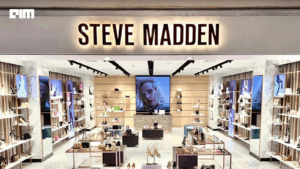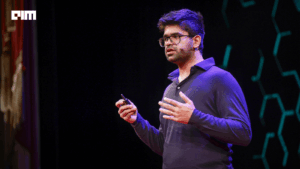Even the most glamorous sales jobs are often built on repetitive, mind-numbing labor: manually updating lead databases, cold-emailing strangers, and tracking down potential customers through clunky software. For years, companies accepted that as the price of doing business. Clay didn’t.
This week, the New York-based startup announced a $100 million funding round at a $3.1 billion valuation, led by Alphabet’s investment arm CapitalG, with participation from Sequoia Capital and Meritech Capital. The raise comes just six months after Clay was valued at $1.25 billion, underscoring the velocity with which the company has grown and how eager investors are to back infrastructure tools that make go-to-market teams more efficient.
Clay calls its users “go-to-market engineers,” and it’s not just branding spin. The eight-year-old company has taken a distinctly engineering-first approach to solving a decades-old problem: how to find and close more customers without flooding inboxes with generic spam. Clay’s platform lets sales and marketing teams write prompts and workflows using AI, APIs, and logic to identify high-quality prospects and reach them with personalized messaging, turning what used to be manual lead generation into something that feels more like programming.
“Half of the company can’t code but has all these ideas for how to grow the company,” said co-founder and CEO Kareem Amin, who started Clay in 2017 alongside Nicolae Rusan. “Clay gives them the power to program revenue instead of just programming software.”
The company’s product sits somewhere between a spreadsheet, a coding interface, and a CRM, enabling users to combine data from multiple tools, enrich it with AI, and trigger actions based on real-world signals. In one use case, a customer used the Google Maps API to identify warehouses with busy outdoor parking lots as a proxy for demand—Clay automated that entire process. In another, users track job postings or funding rounds to surface ideal prospects. The goal is clear: spend less time guessing, more time selling.
“We’re not trying to help people become professionals at updating databases,” said Sequoia partner Alfred Lin, an investor in the round. “Automatically updating the stuff for your leads—is that what we want to do?”
Clay’s revenue is reportedly on track to hit $100 million by the end of the year, tripling last year’s figure, and the company says it’s close to profitability. It currently has over 10,000 paying customers, including OpenAI and Google, and employs around 180 people. “If anything, investors are trying to get us to spend more money,” Amin said, noting that Clay burns relatively little capital despite its growth.
What makes Clay stand out is the tooling and the community. The product is intentionally technical. Amin compares it to Ableton for music producers, Cursor for programmers, or Figma for designers, an integrated development environment (IDE) for go-to-market teams. That comparison isn’t lost on its users: Jordan Topoleski, COO of Cursor-maker Anysphere, said, “Clay is attached to all of our go-to-market functions.”
But that power also makes the product complex. Eric Nowoslawski, who formerly worked at Clay and now runs a lead-generation agency, said the biggest strength and weakness of the platform is how deeply it integrates with other tools. Amin acknowledged the challenge: “We have to make sure we’re not adding so much power that it becomes too complex.”
Despite the learning curve, Clay’s ecosystem is thriving. More than 108 agencies, dubbed “Claygencies,” have been built entirely around helping others implement Clay, with some reaching multimillion-dollar run rates. There are also 60 local Clay Clubs spread across 29 countries where users gather to swap tips and build workflows together. Amin likens the phenomenon to Shopify’s developer ecosystem or Figma’s template-sharing culture. “Sales is a creative job,” he said. “And Clay is a creative tool.”
The company is using part of the new capital to support that growing community. It plans to host its first user conference, Sculpt, in San Francisco this September. It’s also investing heavily in product development, including better ways to share and publish workflows—a kind of marketplace for GTM automation.
Clay’s journey wasn’t linear. Amin calls it a “spiral,” not a success story. The company began with a broad mission: democratize programming. But it wasn’t until Varun Anand joined the team and Clay pivoted toward sales and marketing that its commercial potential became clear. Anand, who cold-emailed Amin about a partnership opportunity, later became the company’s third co-founder and head of operations.
That pivot unlocked the non-coding operator with sharp instincts for growth. The idea wasn’t just to help them move faster, but to give them control. Clay’s “go-to-market engineers” now use the platform to automate not just outreach but intelligence: monitoring signals like new funding rounds, leadership hires, department expansion, or geographic activity, then triggering customized workflows across marketing, sales, and customer success channels.
Amin estimates that 60% of successful customer acquisition depends on targeting the right account, and another 20% on reaching them at the right moment. The rest is execution. Clay’s job is to make the first 80% effortless. “Some of the best companies have figured out how to do this internally,” he said. “What Clay is doing is giving that ability to every company.”
The goal, according to Amin, is to replace the scattershot, high-volume outreach approach that’s long defined B2B sales. “If you actually put in the effort and thoughtfulness into figuring out who really wants your product, you reduce spam and increase your own productivity,” he said. “It’s just hard to do that at scale.”
The most successful Clay-powered teams automate their pipeline like engineers ship code, bringing rigor and repeatability to what was once guesswork. Amin sees parallels to the rise of design systems, low-code tools, and digital music production. “There’s been this cool wave of designers going from 0x to 1x engineers,” he said. “Clay does that for go-to-market.”
The community has picked up the idea and run with it. In the last 4.5 months alone, more than 400 jobs have been posted for “GTM engineers”, a role that barely existed a year ago. Clay’s partner ecosystem has also become a meaningful source of income for others: its 150+ data providers have generated more than $50 million in revenue this year through integrations with the platform.
To support this momentum, Clay is focused on deepening both its product and its ecosystem. The Sculpt conference this fall will bring together Claygencies, GTM operators, and product teams to collaborate on workflow design, community education, and shareable templates. Amin hinted at new functionality that will make it easier to publish and reuse playbooks—automations that today live as private logic trees within teams but could evolve into a marketplace of repeatable best practices.
“We’re just scratching the surface of what we can build,” he said.
The product may be technically complex, but the payoff is simple: cleaner inputs, faster decisions, and fewer generic, misfired outreach attempts. “We’re building the tooling that lets companies find each other more accurately,” said Amin. “That ends up benefiting everyone.”










